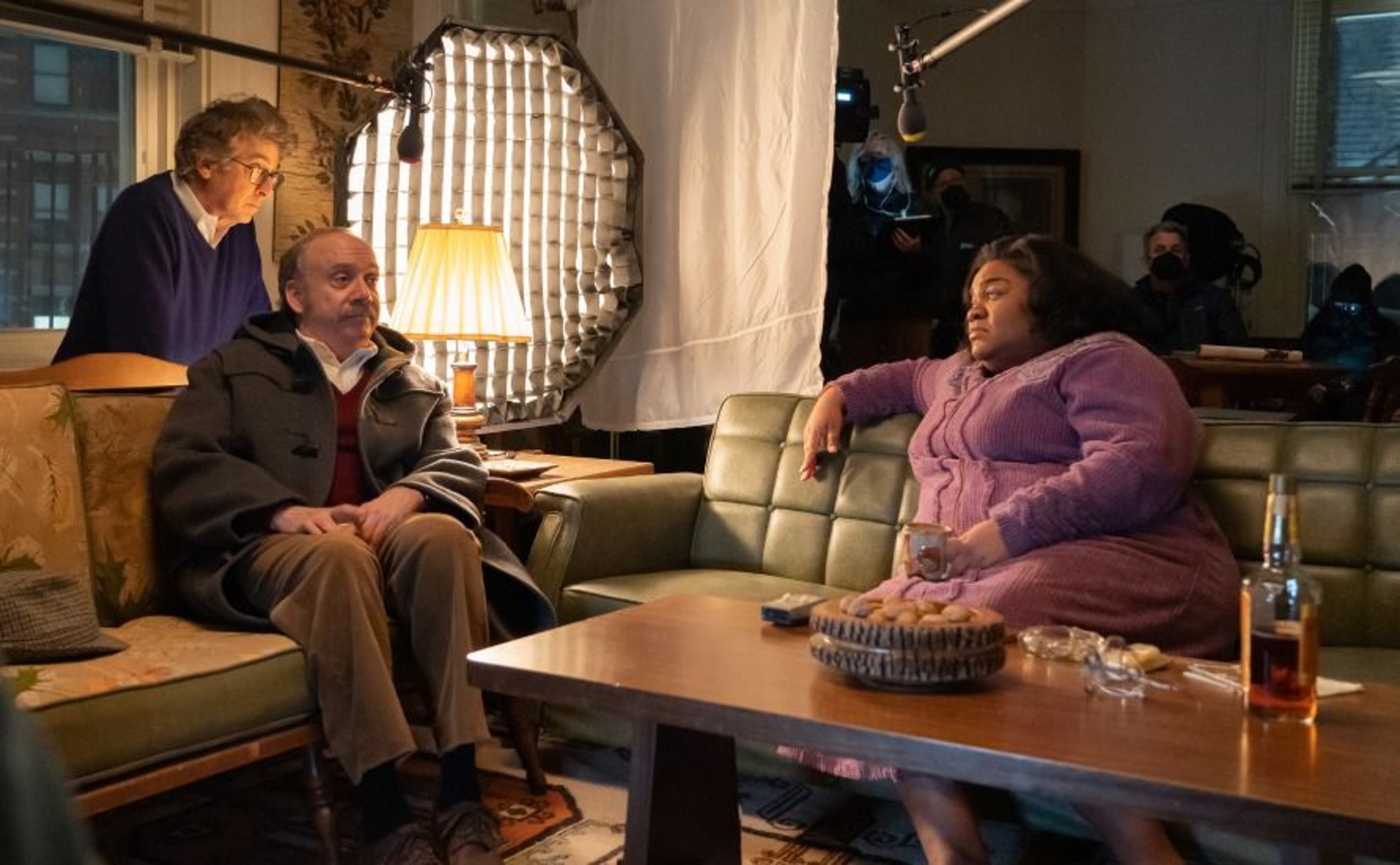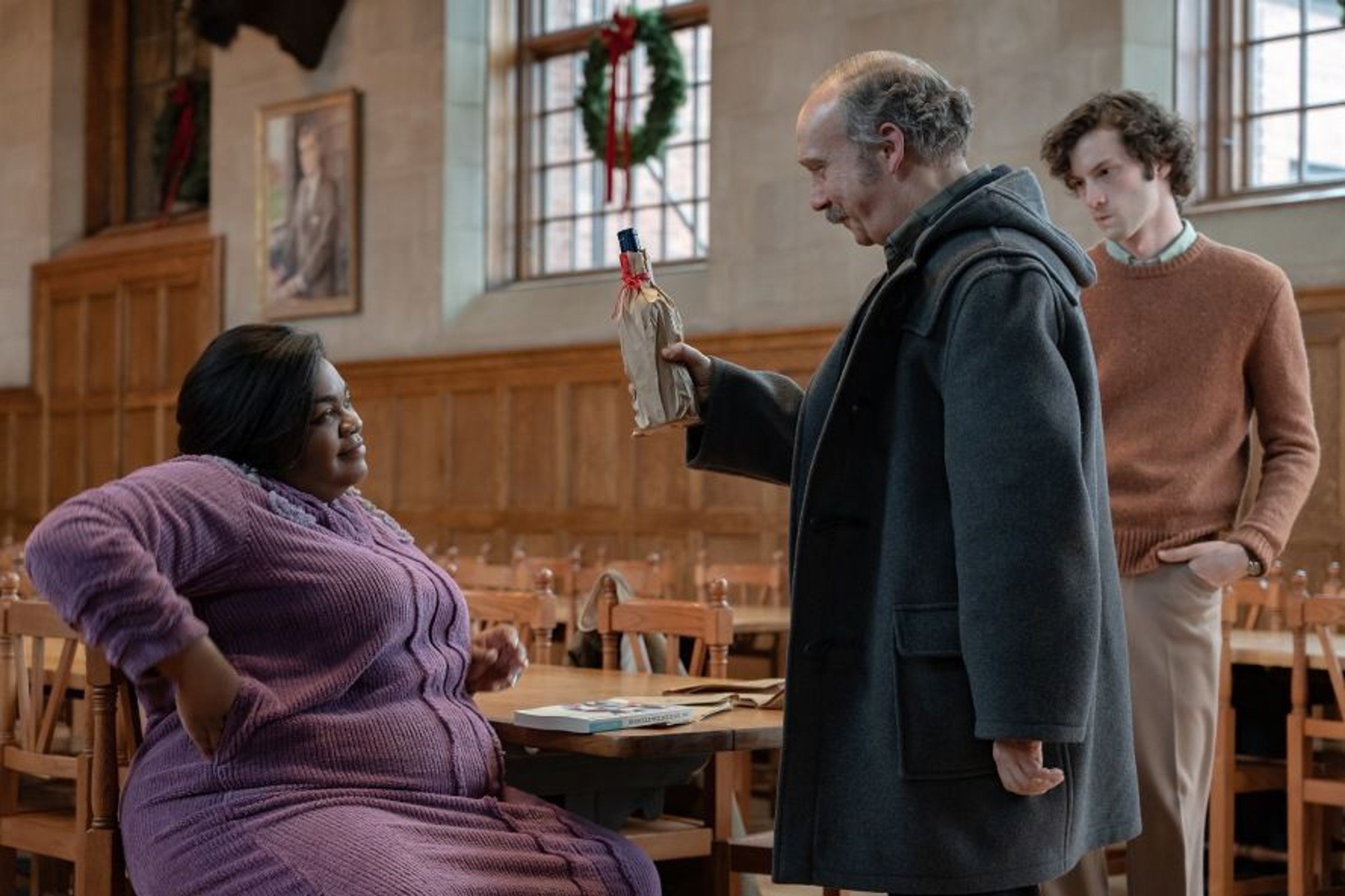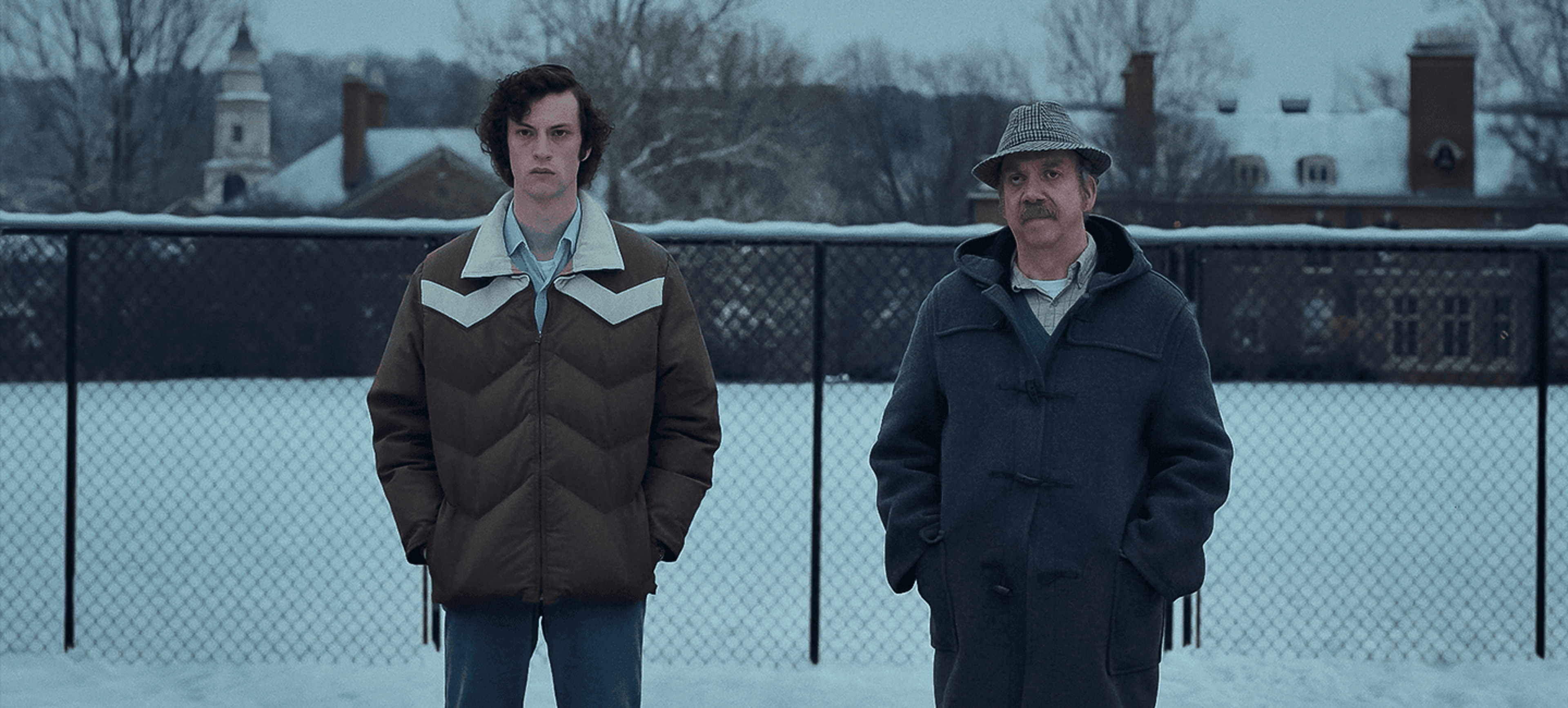The Holdovers, directed by Alexander Payne and written by David Hemingson, is a contemporary comedy set in the early 1970s. It tells the story of three souls—a crabby teacher (Paul Giamatti), a cook who recently lost her son in Vietnam (Da’Vine Joy Randolph), and a troublemaking student (Dominic Sessa)—stuck at a prestigious prep school during the holidays. The three not only survive the season but find a new year on the other side of it in this comedy that “perfectly evokes the 1970s in look, sound, and cinematic satisfaction,” per the Toronto Star.
To capture the film’s time and place, Payne turned to his longtime collaborator, costume designer Wendy Chuck. First working with Payne on his 1999 comedy Election, Chuck created the costumes for his next seven features, helping craft the director’s unique style. For The Holdovers, MovieWeb writes that Chuck, along with production designer Ryan Warren Smith, “deserve utmost praise for their transportive work.”
We spoke with Chuck about the challenges of a period film, the clothes that helped craft Giamatti’s character, and the lasting charm of 70s style.
The Holdovers is now playing in select theaters, everywhere November 10. Get tickets now!
The official trailer for The Holdovers
What made you excited about working on The Holdovers?
Initially because it was a period piece. Alexander has been promising me a period piece. 1970 was a time when there was a lot of change going on in politics and fashion.
What is most interesting in making a period film like The Holdovers?
A lot of clothes don't fit our bodies in the same way. Trying to fit a 2020 body into late 1960s clothes can be very difficult. Also, period means different things to different people. If you are from that generation, you have a memory of what you were doing at the time in life, which is not always what the whole world was doing.
What defined the look of that period?
For me, it was more about the textures and fabrics than the colors. The wardrobe was all about corduroy, tweed, and wool, which have a preppy look and feel.

Alexander Payne, Paul Giamatti, and Da’Vine Joy Randolph on the set of The Holdovers
What kind of research did you do for the costumes?
I started looking for any kind of references that I could find. The most helpful things happened to be in yearbooks from the period. One thing, however, is that the yearbooks were nearly completely in black and white. We only found three color photos, so that was what I had to pivot from for my color references. I also worked with a friend and her brother who had gone to schools in the 1970s much like the one in the film. They talked to me about what they did and what they and their friends wore back then.
What was your biggest creative challenge?
Getting enough clothes. We needed such a volume of clothes for the cast. And being in Covid times, we couldn't recycle clothes like we usually do.
In looking at specific characters, how did you dress Paul Hunham (Giamatti)? What do you think his clothes tell us about his character?
I thought of him as professorial—tweed jackets, bow ties, sweater vests, and corduroy. While I didn’t want to go completely into that stereotypical look, how could I not a little? Besides, the yearbooks demonstrated that was exactly the right look for the period. For Paul, there were two things that were important to get right—his hat and his jacket. Also, in prepping his costumes, we spent a lot of time making sure his three-piece suits felt like he’d lived in them for the last 10 years.
What do his clothes say about him?
I think that he never really stepped out of that world. I always felt like he belonged in the geography of the location.

Da’Vine Joy Randolph, Paul Giamatti, and Dominic Sessa in The Holdovers
How about Mary Lamb (Randolph)?
I didn't want her to be fashion-forward in any way. She needed to feel stuck in the late '60s, and her clothing needed to be more utility-driven. We only see her out of uniform maybe four or five times, but she still needed to stand out. Something interesting happened when I was deciding on her color palette. I’d looked at religious renderings of Mary, who always wore blue and red. I thought that would be right for Mary Lamb as well. Completely unconnected, Alexander calls me one day to tell me he thought Randolph should wear blue, red, and purple. Sometimes you have those moments when you're in different parts of the world and you land on the same thing at the same time.
And the last one, of course, is Angus Tully (Sessa)?
What a find he was. I love Dominic and his enthusiasm and freshness. I feel like his body often dictated his look. A lot of things I tried on him were either too short in the sleeves or the hem. He is a very lean young man, so getting things to fit right was complicated. Alexander got very specific about jackets on him. In the end, his look tells us that he's a part of that world, but he's also got an element of youth about him and is a bit of a misfit. For example, the stripes on his jacket were a detail that lent themselves to his character.

Dominic Sessa in The Holdovers
How did you dress the towns’ folk differently than the kids at Barton Academy?
The locals dress more in jeans and utility-looking clothes. Also, in dressing the students at the academy, I realized that young boys don’t really dress for the weather. They just get used to the cold.
In addition to yearbooks, did you use other references to the period?
We watched a lot of films from the time. When I do research, I search far and wide and then edit down my references. For example, I looked at a lot of fashion images, not so much for a particular look or style, but for the silhouette of the period.
What do you want people to take away?
I think the movie is very hopeful. It has all the feels—the sad, the happy, and the whole range of human experience in between. But I hope audiences take away that it’s okay to be a misfit.
This interview has been edited and condensed for clarity.
